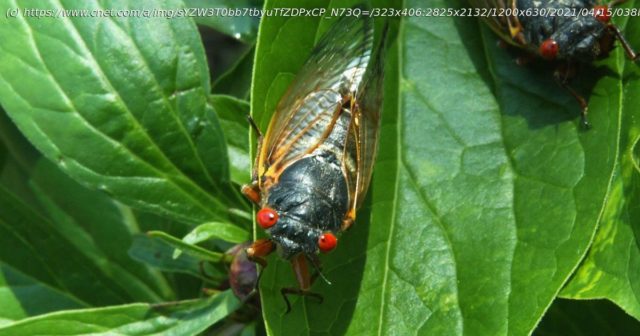For Dan Mozgai, a New Jersey marketing professional, the perfect vacation involves insects. Lots and lots of insects. They can’t be just any random …
For Dan Mozgai, a New Jersey marketing professional, the perfect vacation involves insects. Lots and lots of insects. They can’t be just any random bugs, though. They have to be periodical cicadas. The critters spend almost their whole lives underground, living on sap from tree roots. Then, in the spring of their 13th or 17th year, depending on the type, they tunnel out, synchronously and in huge numbers, for a short adult mating frenzy set to the sonorous sound track of the males‘ come-hither calls. Mozgai knows the periodical cicadas‘ siren song well. He’s packed up his car at least 10 times and driven nearly 30,000 miles on America’s roads, from Maryland to Mississippi, Kansas to Kentucky, to follow it. „I’ll go anywhere,“ he says. This year, he’s leaving home in search of the insects again. The much-publicized emergence of a group of cicadas known as Brood X, which hasn’t been seen above ground since 2004, is under way now. Think of it as the Cicada Olympics. Brood X is one of the largest groups of 17-year cicadas, and 15 Eastern US states, as well as Washington, DC, will see throngs of the black-bodied bugs with red eyes. Some places — including Georgia, Indiana, Kentucky, Maryland, New Jersey North Carolina, Pennsylvania, Tennessee, Virginia and DC — already have. Mozgai,52, is one of the citizen scientists who regularly dedicate their free time to tracking periodical cicadas. They travel the country, snapping copious photos and meticulously recording data on where particular species show up, the time of day they sing, how they react to predators and what kind of foliage females lay their eggs in. Some come from as far as Japan. Call them cicada chasers. Their mapping efforts help scientists better understand the broods‘ behavior and relationships to one another, and explore larger questions about biodiversity, ecology and climate change. Because periodical cicadas are sensitive to temperature, patterns of different broods and species reflect climatic shifts. „I like contributing to scientific research,“ Mozgai says. The return of the periodical cicadas typically starts around early to mid-May and runs through late June. This year, Mozgai is heading to western New Jersey and eastern Pennsylvania for an up-close look at his favorite insects crawling out from their subterranean hideouts. „There’s an awesomeness to it because you’re surrounded by thousands, maybe millions of these creatures that weren’t there the day before,“ Mozgai says. „It’s like an alien invasion, like being in a movie.“ It’s thought that so many periodical cicadas emerge at once so enough can evade predators and live on to mate and start the cycle all over again. Needless to say, not everyone welcomes the idea of millions of bugs descending like a biblical plague. But even those who view the influx as a loud, pesky annoyance would be hard-pressed to deny they’re witnessing nature unfold on an awe-inspiring scale. The cicadas typically begin to come out when soil temperatures 8 inches (20 centimeters) underground reach 64 degrees Fahrenheit (18 degrees Celsius). „That seems to be the trigger that causes them all to emerge over a few days or weeks in one area,“ says Michigan State University entomologist Gary Parsons.
Start
United States
USA — IT Cicada chasers: Meet the citizen scientists mapping the bugs of Brood X






